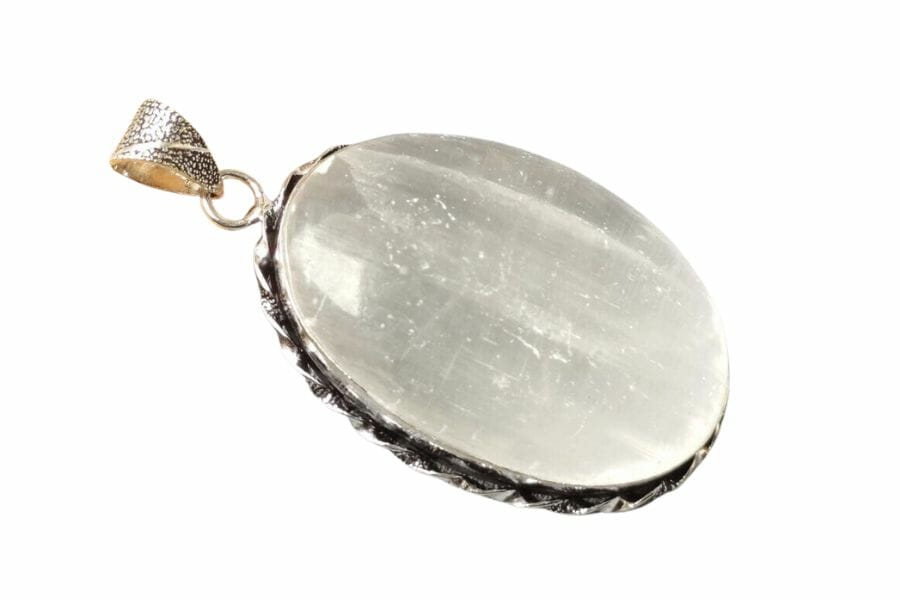Satin spar and selenite are two intriguing minerals that often spark curiosity among enthusiasts and experts alike. At first glance, they might seem quite similar, and it’s no surprise since they both belong to the gypsum family.
However, when you dive a bit deeper, you’ll find a world of details that set them apart as well as tie them together. Let’s dive into them and differentiate satin spar vs selenite.
Whether you’re a seasoned geologist, a hobbyist, or just someone intrigued by the wonders of the natural world, this exploration of satin spar and selenite promises to be a fascinating journey.
Satin Spar vs Selenite – The Major Differences
Satin spar and selenite are both interesting minerals, but they have some key differences. Even though they might look or feel similar at first, the way they shine, grow, and where they’re found can be quite unique.
Appearance – Selenite can be as transparent as glass
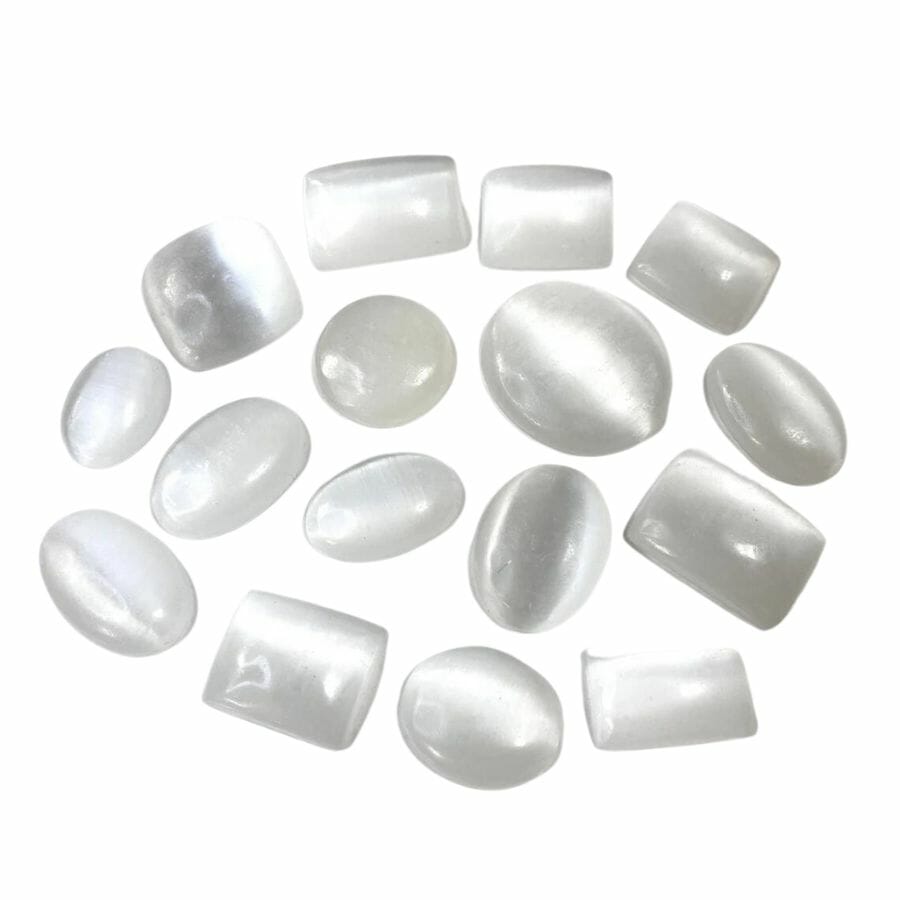
Satin spar and selenite are both visually stunning, but in subtly different ways. If you’ve ever held a piece of satin spar, the first thing you’d probably notice is its silky sheen.
This shimmer is due to its fibrous nature, which reflects light in a distinctive manner.
When you move it around in the light, it has this gentle glow that’s mesmerizing. The texture, too, has a smooth feel, much like its name suggests.
Selenite, on the other hand, offers a different experience. In its thinner forms, selenite can be so transparent that you could literally lay it on top of a page and read the text through it.
This clarity is what makes selenite so prized for decor, as it can have the appearance of liquid light, especially when backlit.
And even though both minerals can be described as translucent, selenite often leans more towards the transparent end of the spectrum, allowing for a clearer view of objects behind or beneath it.
Colors – Satin spar can be milky white or orange
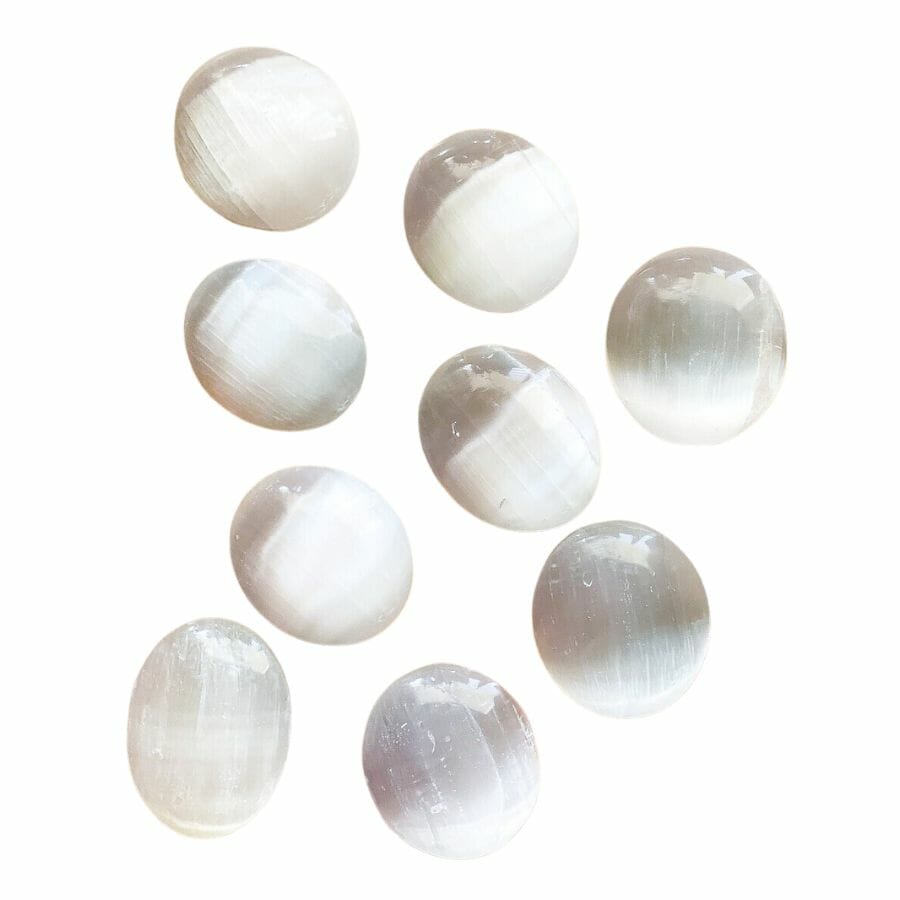
When you think of satin spar and selenite, the first color that might pop into your mind is milky white. Both minerals often showcase this classic shade. But, they’re not limited to just this hue, and that’s where things get interesting.
Satin spar, while commonly found in that creamy white, sometimes surprises with a warm, vibrant orange. Imagine the cozy shade of a fall pumpkin or the color of a sunset, and you’re on the right track.
This variation adds a unique touch to the mineral’s collection and is often sought after by enthusiasts.
Selenite, on the other hand, offers a broader palette. While its milky white form is popular and widely recognized, it’s just the tip of the iceberg. This mineral can sometimes don shades of brown green, resembling the color of muted olive leaves.
Then there’s the brownish yellow, which can remind one of sandy beaches. Other times, you might stumble upon selenite with gray green or gray white hues, adding more depth and variety to its appearance.
Luster – Selenite shines like a piece of glass
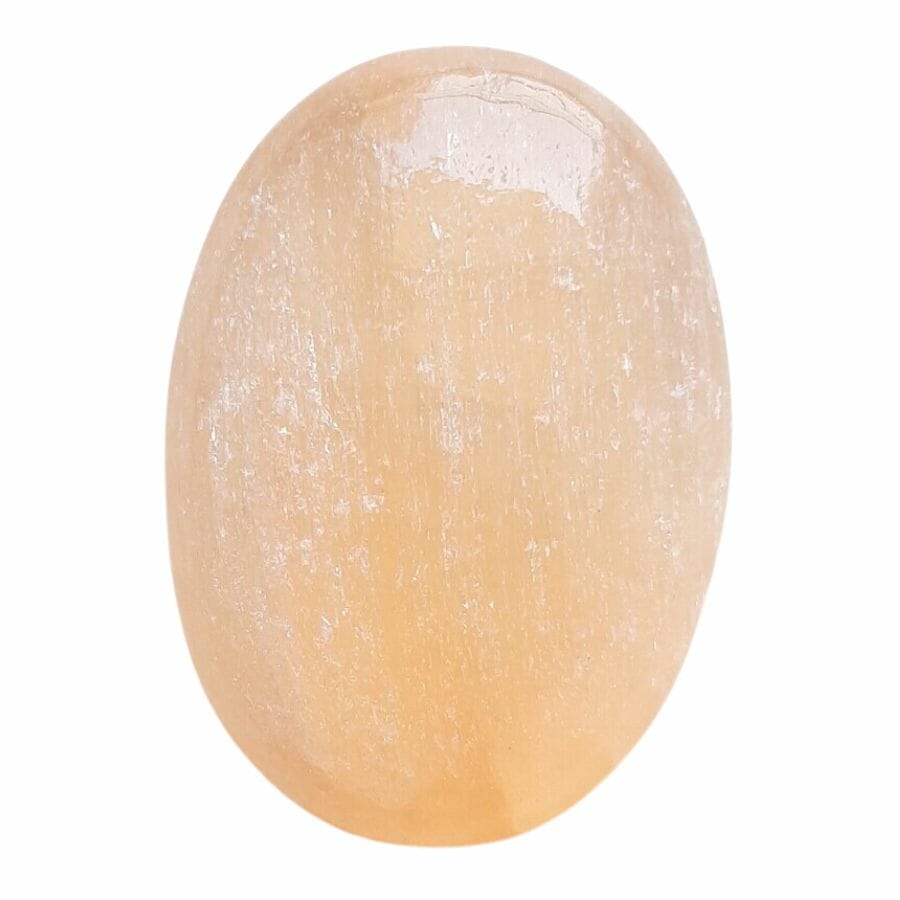
Luster describes the way a mineral reflects light, and it’s one of the standout features that differentiate satin spar from selenite.
When you hold satin spar in your hand and tilt it this way and that, you’ll notice its unique silky sheen. This luster is a direct result of its fibrous nature.
Think about how silk or satin fabric catches the light; it has a soft, diffused glow. That’s the kind of light reflection you see in satin spar, giving it a gentle and smooth radiance.
On the flip side, selenite has a different way of playing with light. It has a pearly luster. If you’ve ever looked at the inside of a seashell or observed the sheen on a pearl, that’s the kind of luster we’re talking about here.
It’s a bit deeper and more luminous than the silky luster of satin spar. This pearly appearance can give selenite a slightly more translucent or glowy look, especially when light passes through it.
Crystal structure – Satin spar crystals look more fibrous
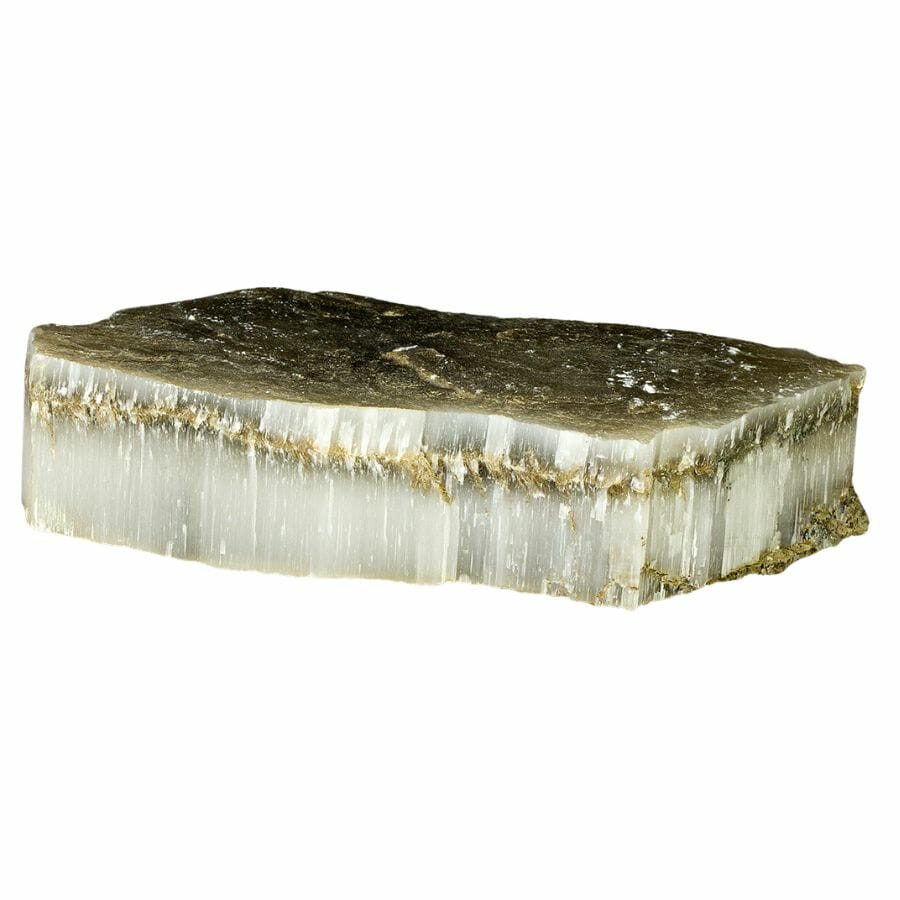
At a glance, satin spar and selenite might seem similar because both fall under the gypsum umbrella and share a monoclinic crystal system.
But, when you delve deeper into how their crystals are structured and grow, the differences are quite evident.
Let’s start with selenite. This mineral is versatile in how its crystals form. Sometimes they grow in thin, flat sheets that look a lot like mica.
Selenite can also grow into formations known as bladed rosettes. These often transparent formations, called desert roses, are pretty distinctive. Alongside these, you might also find tall, columnar crystals of selenite.
Now, let’s talk about satin spar. Its crystal growth is a bit more consistent. The crystals are typically prismatic, giving them a long, slender appearance.
The standout feature is their fibrous nature, where the crystals grow in parallel to each other.
This leads to that silky sheen we associate with satin spar. As for where they’re found, satin spar commonly forms in seams, and these can stretch quite a bit.
Unlike selenite, which can be free-floating, satin spar is often rooted to a matrix or base rock.
Selenite vs Satin Spar – The Similarities
Satin spar and selenite are like close cousins in the mineral world. They share a lot of common features, which can sometimes make them hard to tell apart.
Chemical composition – Satin spar and selenite are both types of gypsum
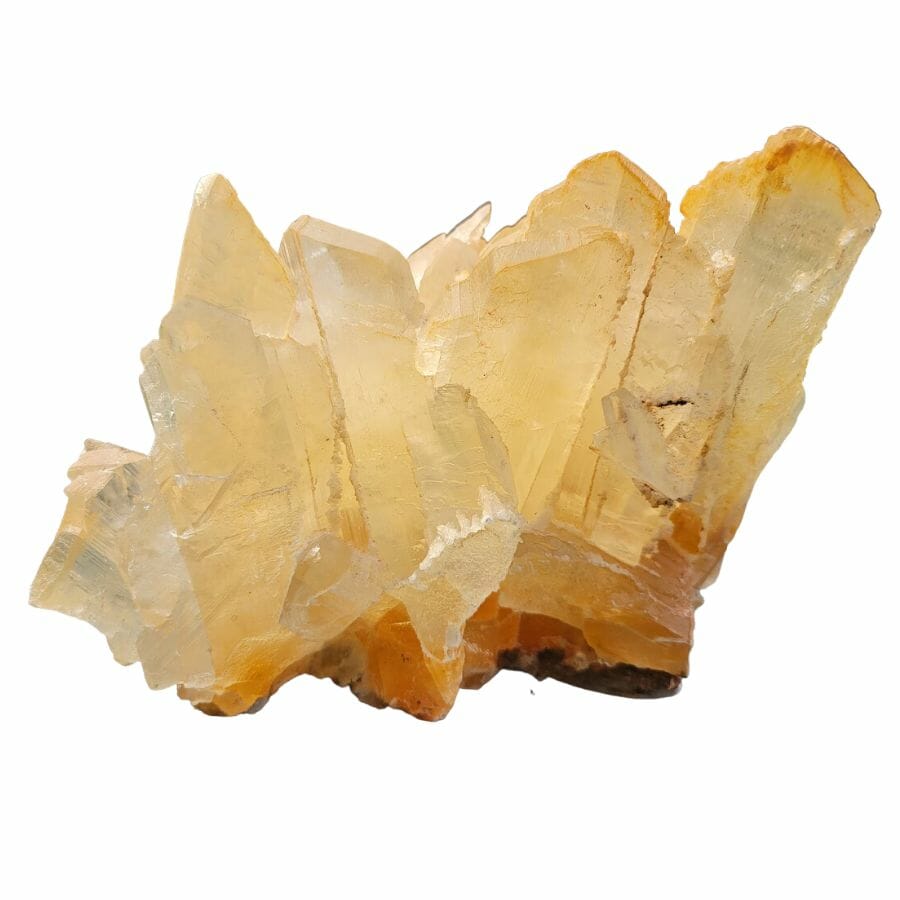
Satin spar and selenite share the same basic chemical composition because they are both types of gypsum. The formula for gypsum is CaSO4·2H2O. This means each molecule of gypsum consists of calcium, sulfur, oxygen, and water.
The water part is interesting; it’s why gypsum can feel slightly warm to the touch compared to other minerals. It has the ability to release this water when heated, turning it into a powder known as plaster of Paris.
Now, even though both satin spar and selenite are gypsum, they can look and feel different. This is due to the way their crystals form and how they grow. However, at the very core, their chemistry remains the same.
It’s a bit like how ice and steam are both forms of water; they look and behave differently, but their basic makeup, H2O, remains unchanged.
Streak – Both stones leave a white streak
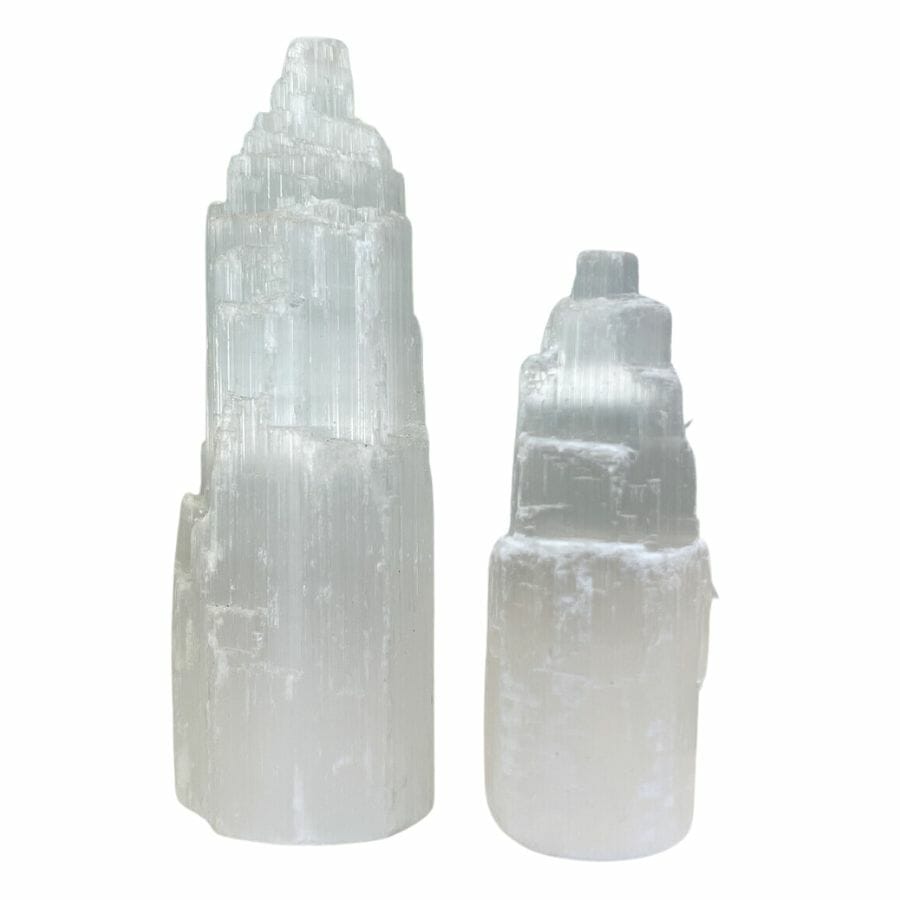
One cool method you can use when you’re trying to identify minerals is the streak test. You take the mineral and rub it on an unglazed porcelain plate, and the color it leaves behind can give you clues about what you’re holding.
Now, when we test satin spar and selenite, their streak will reveal another thing they have in common.
Both satin spar and selenite leave a white streak on the plate. Imagine drawing with a piece of white chalk, and you get the idea. This white streak isn’t just a random occurrence.
It’s tied to the fact that they’re both gypsum-based minerals. Gypsum, by nature, tends to leave this kind of mark.
Hardness – The two minerals are quite soft
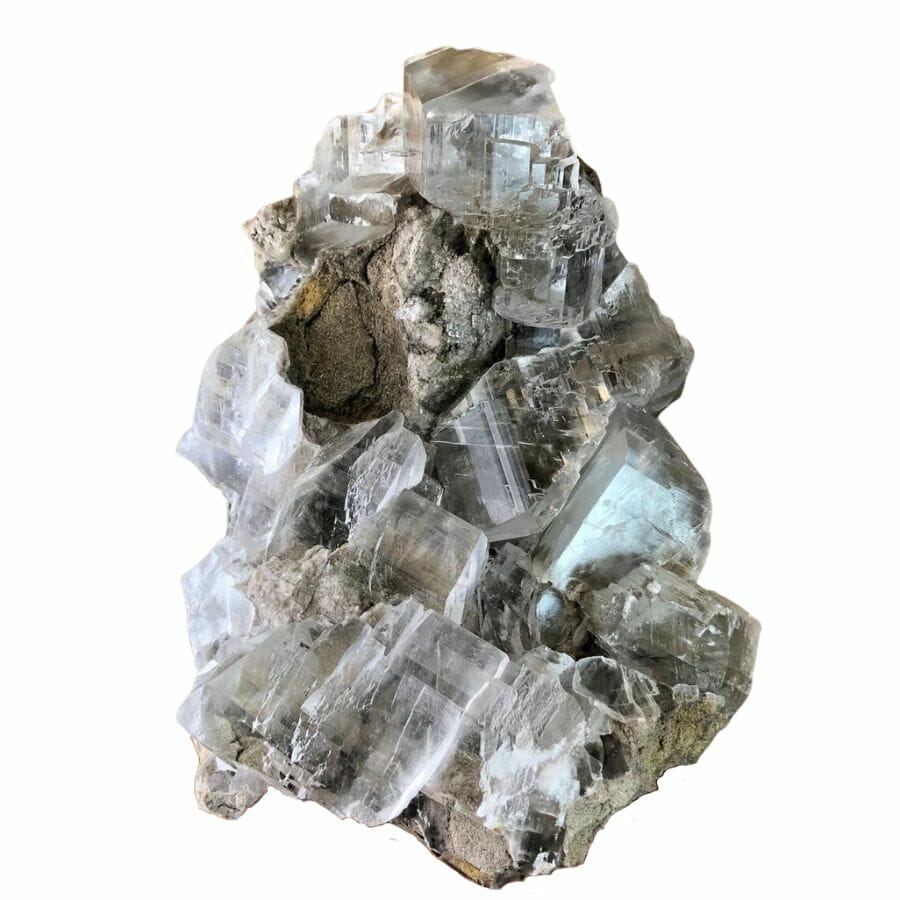
When you think about minerals, you might picture something super hard and unbreakable. But that’s not always the case, especially when we talk about satin spar and selenite.
One thing that really stands out about both these minerals is their softness.
They rank at a 2 on the Mohs hardness scale. To put that into perspective, the scale goes from 1, which is super soft, to 10, which is diamond-level hard. So, a 2 is pretty low on the scale.
This means if you ever hold a piece of satin spar or selenite and decide to give it a gentle scratch with your fingernail, you’ll leave a mark. Yes, they’re that soft!
This softness can be a double-edged sword. On one hand, it means you need to handle them with care. But on the brighter side, it makes them unique. Not every mineral can claim to have such a gentle touch.
Cleavage – Each one splits in one direction
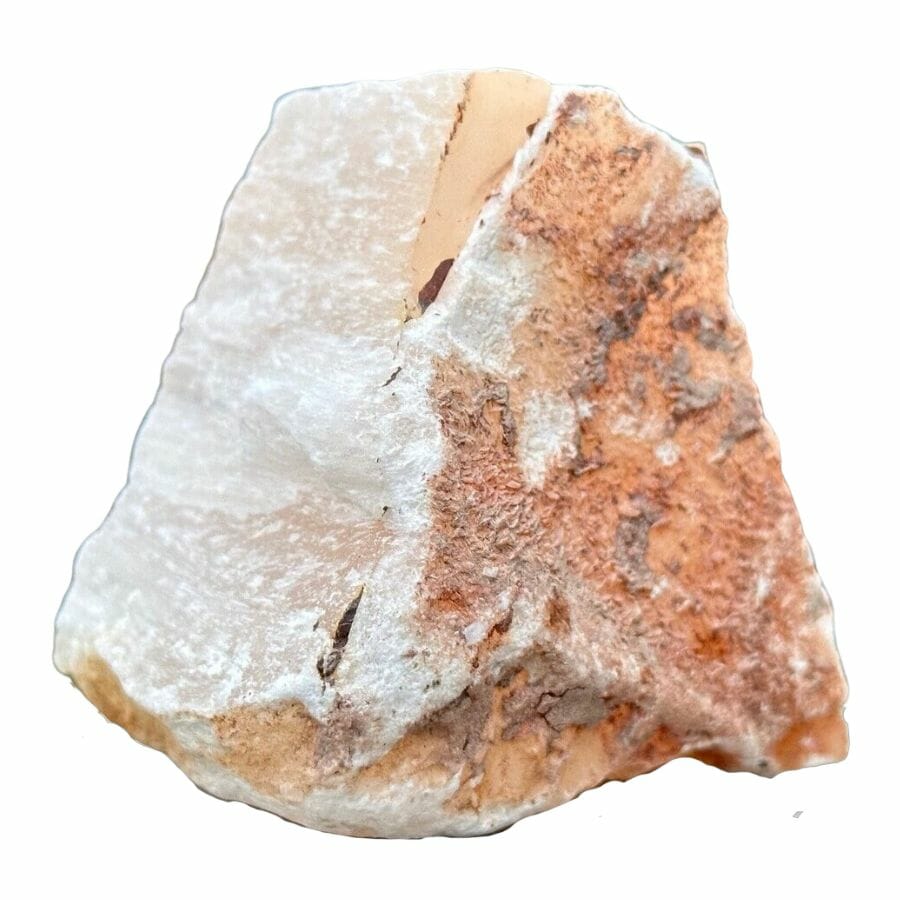
Just like how wood splits easier along the grain, minerals break better along certain planes or directions. That’s what cleavage is. And here’s something interesting: both satin spar and selenite have a shared trait in this area.
They both exhibit perfect cleavage in one specific direction. This might sound technical, but what it really means is that they can be split into thin sheets without much effort.
Imagine opening a book; the spine acts as a natural division, making it easy to flip the pages. In a similar way, both these minerals have a natural “split line” where they break most easily.
This property isn’t just a fun fact. It’s one of the reasons why selenite, for example, can form those thin, sheet-like crystals.
It’s also why artisans can craft beautiful objects from these minerals, taking advantage of their natural cleavage to shape them.
Density – Both satin spar and selenite have the same density
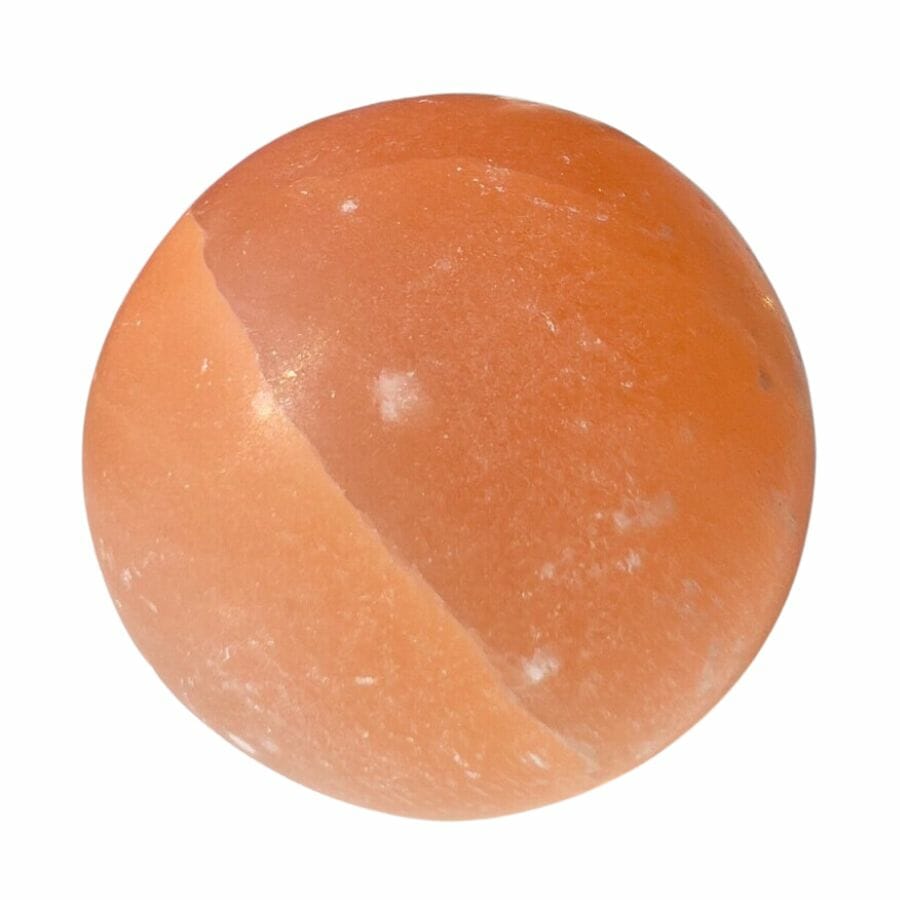
Density might sound like a complicated term, but it’s basically a measure of how much stuff is packed into a certain space. When you pick up an object, the heaviness you feel for its size is related to its density.
Here’s another thing satin spar and selenite have in common: their density.
Both these minerals have a density that falls between 2.31 and 2.33 grams per cubic centimeter. This is a specific range characteristic of gypsum, which is the mineral family both satin spar and selenite belong to.
So, if you had a tiny cube, about the size of a dice, made up of either of these minerals, it would weigh a bit over 2 grams.
Formation – The two form in roughly the same areas
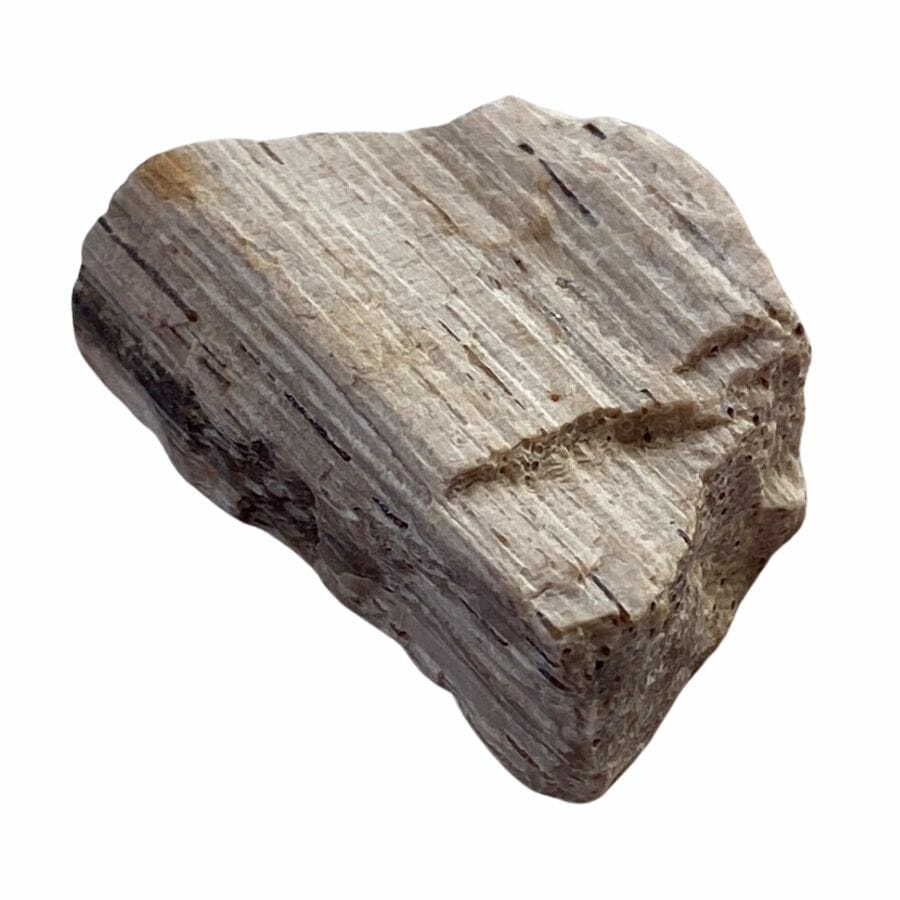
When you think about the birthplaces of minerals, places like deep within mountains or fiery volcanoes might come to mind. But for satin spar and selenite, their beginnings are a bit more tranquil.
They both come to life in places where water slowly dries up, leaving behind the minerals it once held.
Specifically, satin spar and selenite often form in evaporative settings like clay beds and salt basins. Imagine a shallow body of water, rich in minerals, slowly drying under the sun.
Over time, as the water disappears, minerals like gypsum start to crystallize. It’s in this process that both satin spar and selenite start their journey.
If you’re wondering where to go rockhounding for gems like satin spar and selenite, try areas with evaporative terrains like salt basins or clay beds.
Now, even though they form in similar environments, the exact conditions and elements present can vary. This is what leads to their unique appearances.
For instance, selenite might grow in clear, large crystals in one spot, while in another location, the conditions might favor the fibrous, silky growth of satin spar.
Fluorescence – Both stones can glow blue under UV light
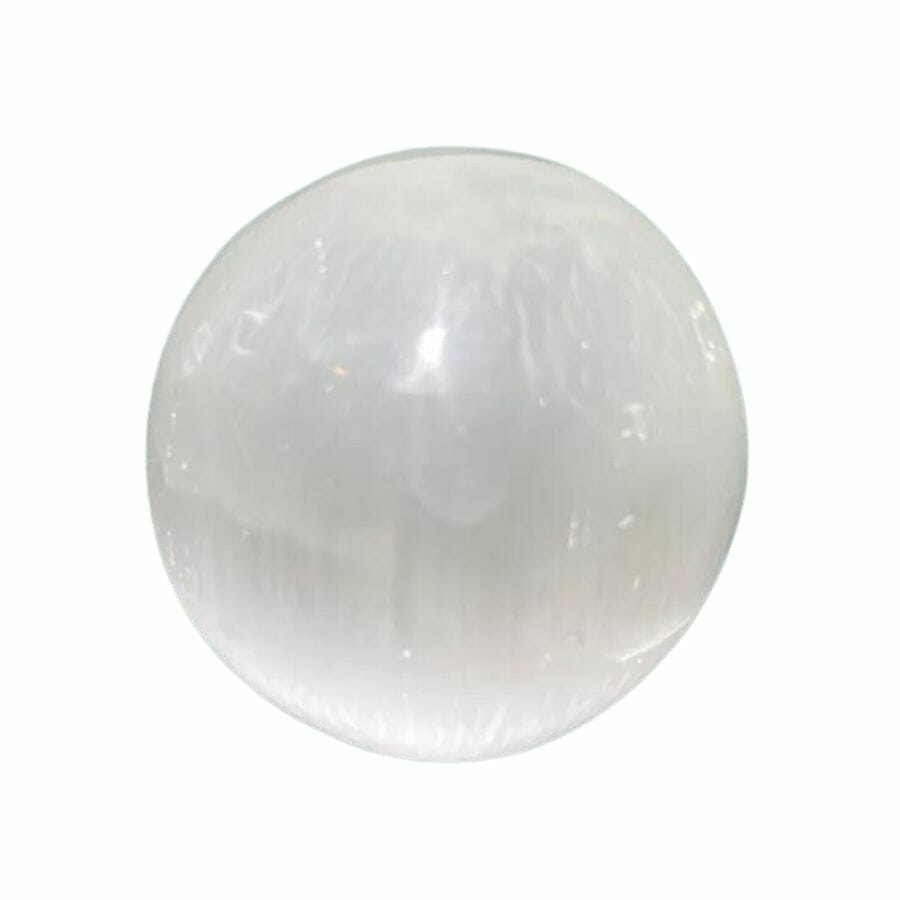
Imagine turning off all the lights and shining a special UV light on a mineral, only to watch it glow a vibrant blue. It sounds like something out of a sci-fi movie, right? But for satin spar and selenite, this is a reality.
Both these minerals can light up in a brilliant blue hue when exposed to UV light. This glow-in-the-dark effect is called fluorescence. It’s a pretty cool party trick, but it’s also a scientific phenomenon.
When UV light hits these minerals, they absorb its energy and then re-emit it as visible light, causing that bright blue glow.
But the magic doesn’t stop there. After the UV light source is turned off, satin spar and selenite might continue to glow faintly for a short while. This lingering glow is called phosphorescence.
It’s like the minerals have stored some of the UV energy and are slowly releasing it.
Magnetism – Neither one is magnetic
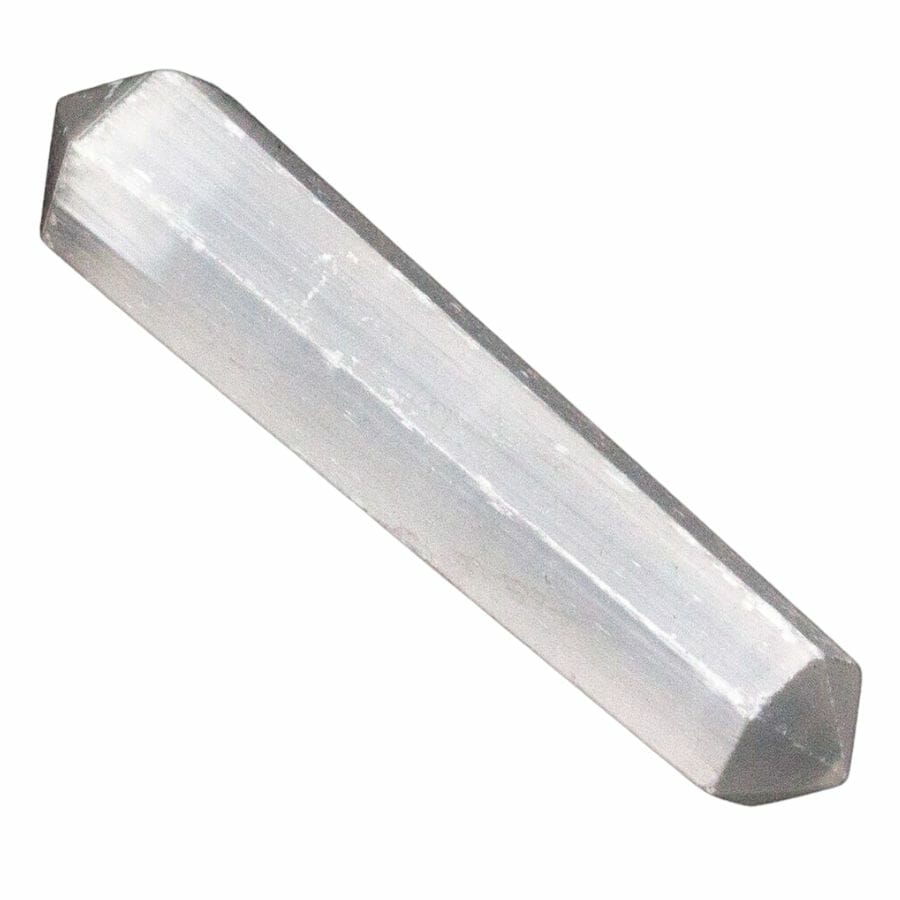
Magnetism is one of those cool things that can make objects stick together or push them apart. It’s what makes fridge magnets stick and compasses point north. But not all minerals have this magnetic touch.
Satin spar and selenite are perfect examples of this.
Both of these minerals are completely non-magnetic. This means if you held a magnet close to them, you wouldn’t see any pull or push. They just kind of mind their own business and don’t react.
This lack of magnetic response is actually a pretty common thing for many minerals, and it can help in identifying them.
If you were out exploring and found a beautiful clear or silky white crystal, knowing that it doesn’t react to magnets could be a hint you’re holding selenite or satin spar.
Conductivity – Satin spar and selenite are both non-conductive
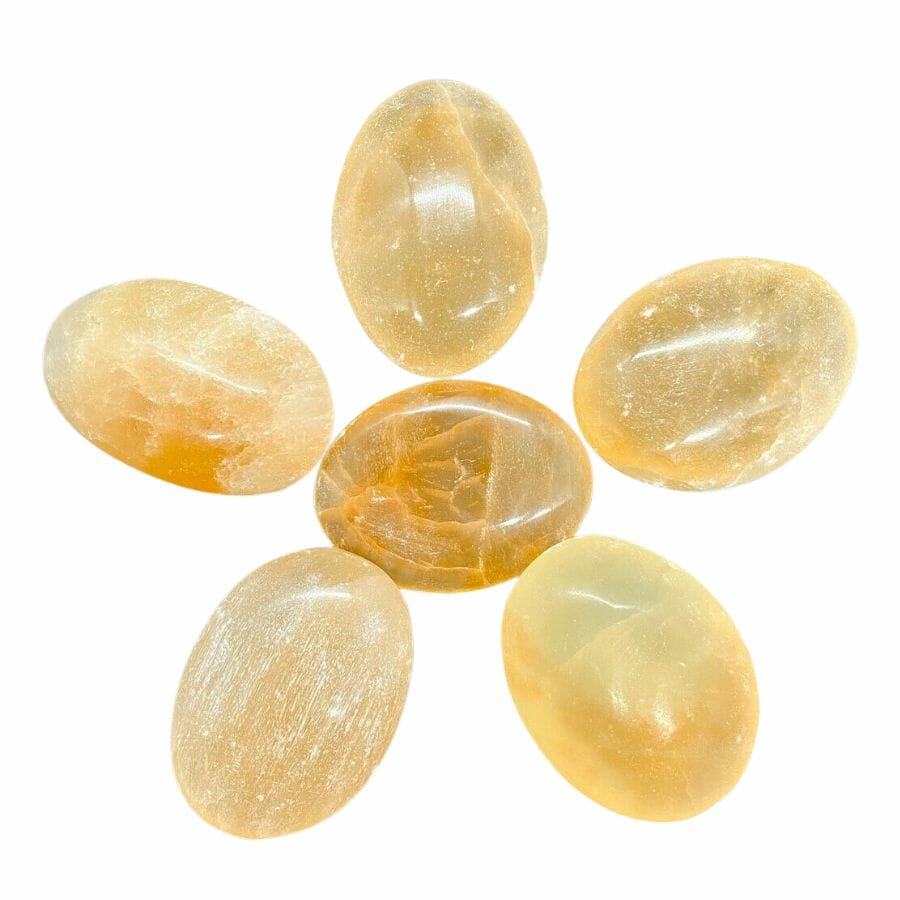
Think about what happens when you plug in a device. Electricity flows through the cord, powering it up. This flow is possible because the cord’s material conducts electricity.
Satin spar and selenite are both non-conductive, like many other minerals. This means if you tried to pass electricity through them, it wouldn’t work out too well. They are poor conductors of electricity, mainly because they aren’t made of metals.
This non-conductivity is a result of their specific makeup. Their non-metallic nature ensures that they resist the flow of electric current rather than helping it along. If they were in an electrical circuit, they’d act more like a barrier than a bridge.
Location – The two minerals are found all over the world
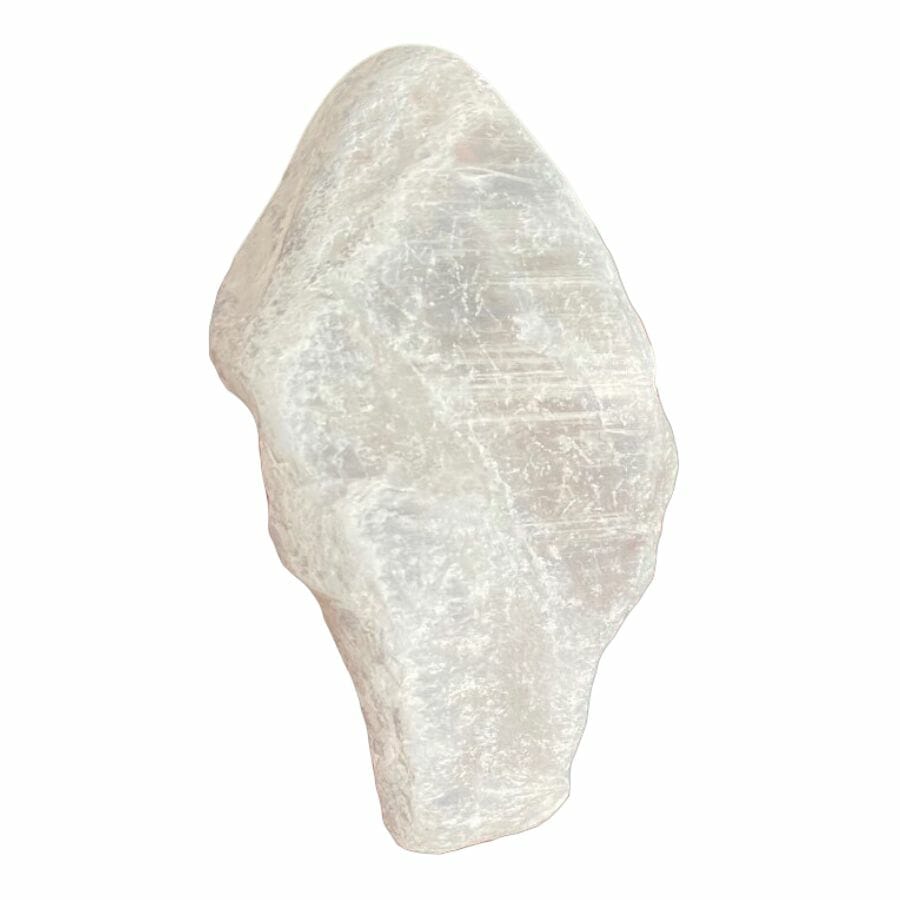
Both satin spar and selenite, being forms of gypsum, can be found in many corners of the world. They pop up in varied locations, spanning different continents and climates.
For instance, Brazil houses commercial quantities of gypsum. Pakistan and Iran, with the latter being the world’s second-largest producer, are big players in the gypsum game.
Europe also has its fair share of gypsum deposits. Spain leads the charge as the continent’s main producer, but Germany, Italy, England, and Ireland also have significant gypsum resources.
If you’re curious about how to find crystals of satin spar and selenite in the US, places like Fort Dodge, Iowa, and Plaster City, California are great spots to start your search.
Not to be outdone, Kalannie in Western Australia has small mines selling gypsum for agricultural use, aiding in improving soil health.
One more thing that’s pretty cool? Massive gypsum crystals, some as long as 11 meters, have been discovered in the Naica Mine caves in Chihuahua, Mexico.
Price – Selenite and satin spar are generally inexpensive
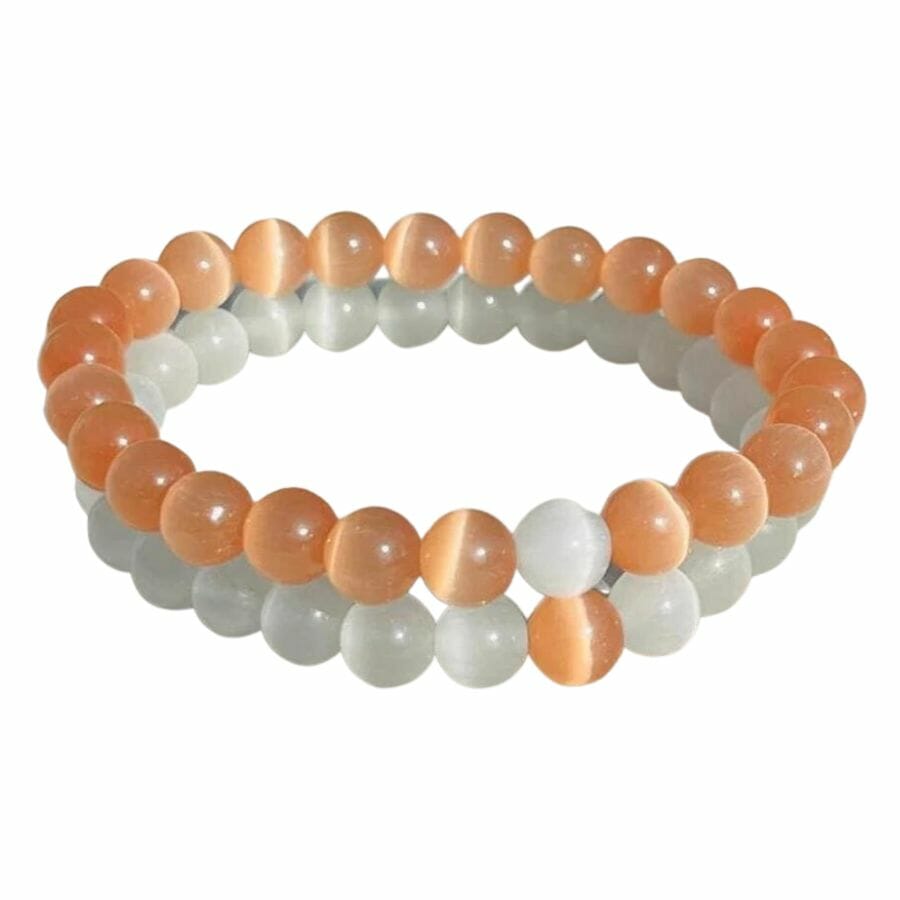
If you’re wondering what selenite is worth, you’re in for a nice surprise. Both satin spar and selenite should be on your list if you’re in the market for a mineral that won’t break the bank.
While some gems and minerals can set you back a fair bit, these two are gentle on the wallet.
They’re both in the same price range and pretty budget-friendly. They’re a great choice for collectors, hobbyists, or anyone looking to dabble in the world of minerals without splurging too much.
One of the reasons they’re so affordable is their abundance. Both satin spar and selenite can be found in various parts of the world, which means there’s a good supply of them. And when there’s a healthy supply, prices tend to stay reasonable.
The Easiest Ways to Tell Satin Spar and Selenite Apart
Satin spar and selenite are both pretty cool minerals, but did you know they have differences that make each one unique? Even though they come from the same gypsum family, you can spot their differences by looking closely.
Look at the stone’s appearance
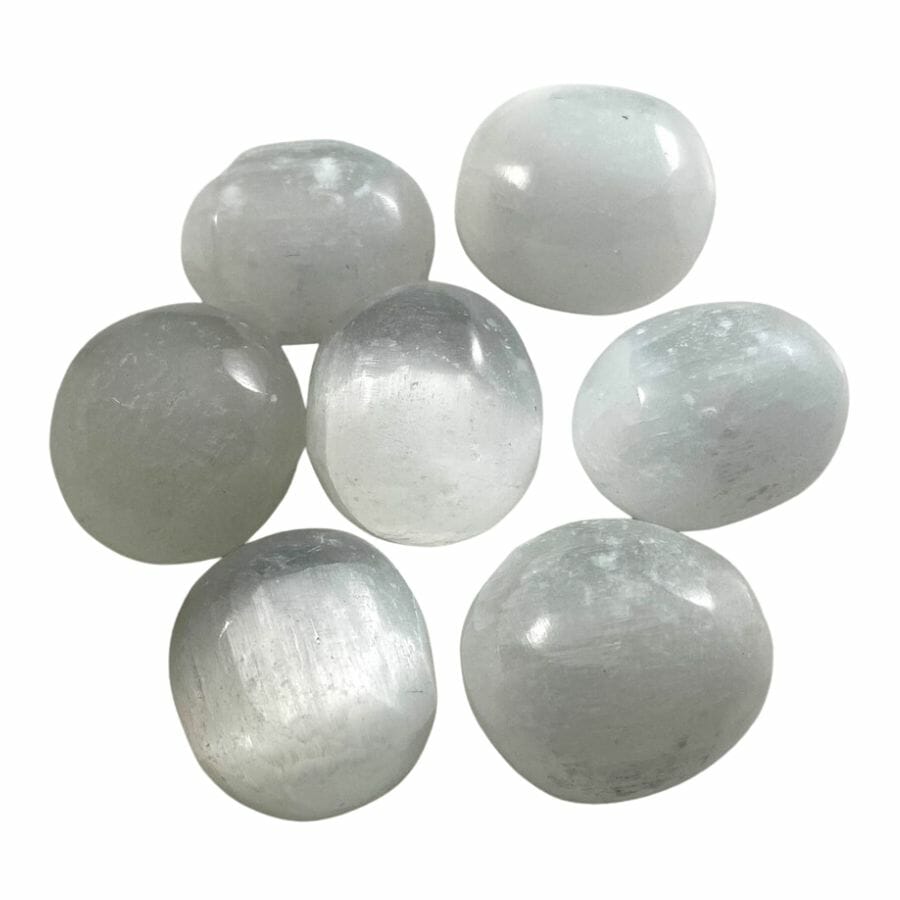
First, take a good look at the surface of the stone. Satin spar will stand out because of its silky appearance.
Its fibrous nature gives it this unique texture. When you touch it or tilt it under light, it’ll remind you of the gentle sheen you see on satin fabric. It’s got that smooth and almost glowy look to it.
Now, shift your focus to selenite. This mineral looks drastically different. Instead of the silky look of satin spar, selenite is much clearer. In its most transparent form, it might even remind you of a flat sheet of clear glass.
The transparency is a big giveaway. If you can almost see through the stone, or if it seems like it could be a window pane, you’re probably looking at selenite.
This stark difference between satin spar and selenite in clarity and sheen makes them fairly easy to distinguish just based on their appearance.
Look at the stone’s shape
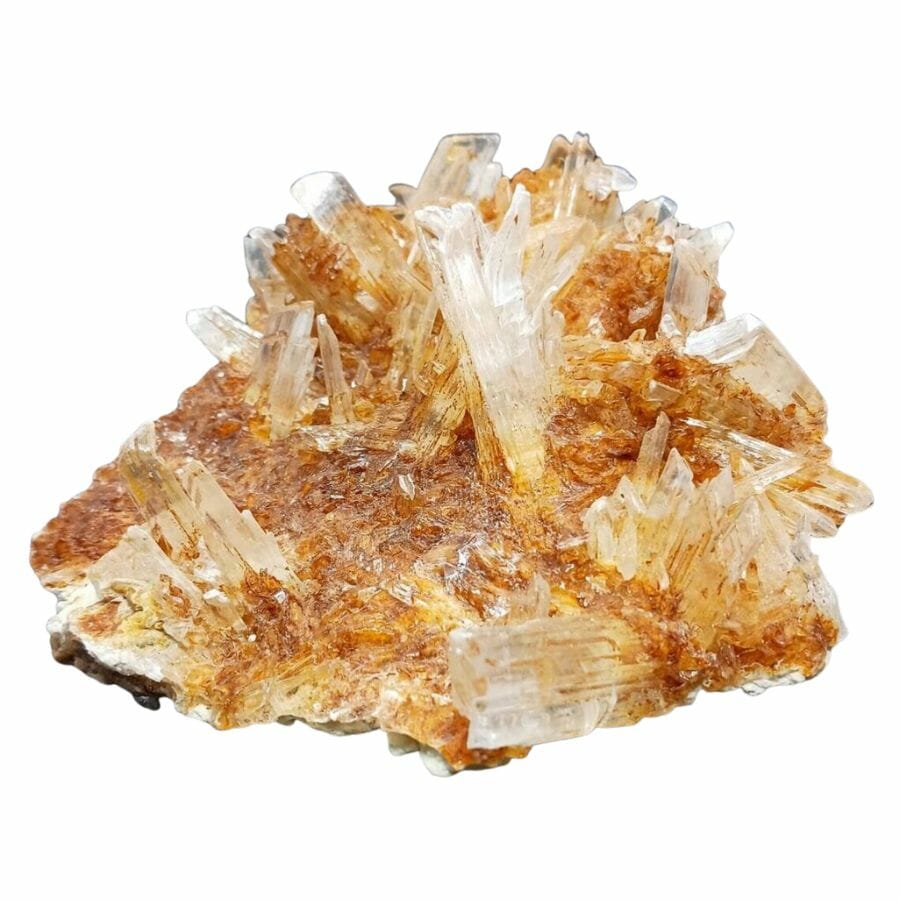
The shape of a mineral can be a major clue when you’re trying to identify it, and this is definitely true for telling satin spar apart from selenite.
Satin spar is all about those long fibers. These fibers often grow parallel to each other, giving the stone a linear appearance. Think of it like strands or threads bundled together.
If you stumble upon a mineral with this kind of elongated, fibrous structure, there’s a good chance you’re looking at satin spar. It doesn’t typically form in wide, flat shapes or in intricate clusters.
On the other hand, selenite has its own unique forms. Sometimes it’ll look like thin plates, and those plates can be transparent, making it look like a slice of clear glass.
But selenite has a more famous shape – the desert rose. These are super cool and look just like their name suggests: flower-like clusters of crystals. They’re flat and they radiate outward, almost like petals.
Examine the stone’s luster
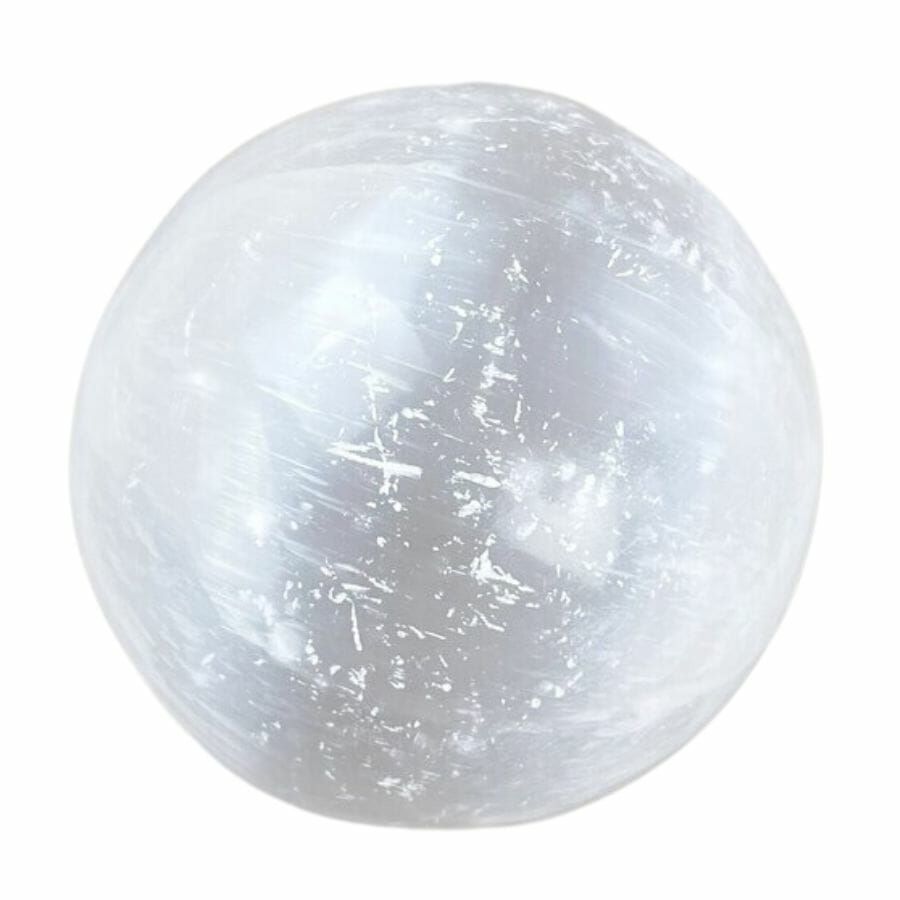
Satin spar, true to its name, has a silky luster. Think about how light plays on a piece of satin cloth. The fibers give it a unique glow, soft and diffused.
It doesn’t have the strong reflections you’d associate with something shiny or glassy. Instead, it’s like a muted, smooth shimmer that’s distinctive and almost soft to the eyes.
Selenite, on the other hand, has a pearly luster. It’s different from the silky sheen of satin spar. Instead of the soft shimmer, selenite has a more reflective surface, more like the inside of a seashell.
The luster is brighter and more pronounced. It can catch the light in such a way that it almost gleams.
By focusing on these differences in how the stones shine and reflect light, you can usually tell satin spar vs selenite quite easily. Remember, silky for satin spar and pearly for selenite!

